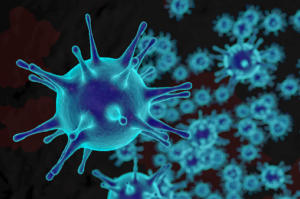Gene shuffling allows microbial disguise
Posted on October 10, 2012 by Janet Daley, University of Nottingham
Pathogens employ an array of tricks to evade detection by the immune system of the hosts they infect. The rickettsial bacterium Anaplasma phagocytophilum is a master of disguise, shuffling genes to change its outer appearance.

In their paper, published in Microbiology, scientists from the US, describe for the first time how the bacterium’s strategy enables it to persist undetected in a reservoir host, the dusky-footed woodrat, in parts of California.
As with many pathogens, A. phagocytophilum persists within a reservoir host causing little or no disease. However, if the bacterium is transmitted to a person by the bite of a tick that has previously fed on an infected reservoir host, it can cause anaplasmosis. Usually, patients suffer an influenza-like illness, with less than half of infected people developing gastrointestinal signs and less than 10% a skin rash. It is rarely fatal.
The host’s immune system produces antibodies in response to proteins recognised as ‘foreign,’ i.e. antigens on the surface of bacteria. By binding to the antigen, the antibodies are able to neutralise the bacterium, fighting infection. It takes around two weeks for the body to mount an effective antibody response to a novel antigen. A. phagocytophilum gets around this by continually changing one of its main surface antigens called MSP2. The bacterium has at its disposal around 100 different pseudogenes, which it can shuffle and recombine into the MSP2-encoding gene, msp2(p44) to create different versions of the antigen. Therefore, by changing the appearance of MSP2, the bacterium avoids detection.
The researchers monitored changes in the msp2(p44) gene during the course of infection of three dusky-footed woodrats. Expression levels of msp2(p44) fluctuated in two- to six-week cycles, suggesting that swapping pseudogenes to produce variations of MSP2 may allow the pathogen to escape the immune response just as it starts to kick in. In one woodrat, which had the more rapid cycling of msp2(p44) gene expression, infection lasted six months, in the other two it lasted at least eight months. None of the woodrats became ill. During the course of the study, 60 unique variations of the msp2(p44) gene were detected; only four pseudogenes were repeated. At the end of the study, there were 64–75 variants that had not been used by A. phagocytophilum in each of the woodrats. The researchers calculated that the pathogen could theoretically continually evade the woodrat immune response for over two years, by changing MSP2, before it ran out of gene variations. Bearing in mind that the normal lifespan of a woodrat is only 1-2 years, this can mean lifetime persistence of the infection.
The findings suggest that in the evolutionary arms race between pathogens and hosts, the relationship between A. phagocytophilum has co-evolved to allow a relatively harmonious co-existence. Learning more about the immune evasion strategies employed by bacteria could eventually lead to novel vaccines and/or treatments for pathogenic micro-organisms.
